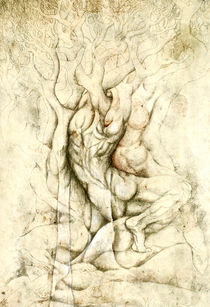PEDRO ZUBIZARRETA
DEVELOPMENT AND EVOLUTION OF THE ARTISTIC WORK OF PEDRO ZUBIZARRETA
The 45 years of artistic work of Pedro Zubizarreta (1977-2023) can be organized chronologically and divided into 4 groups called "Times" and subdivided into 22 "Series":
SPANISH TIME, “Aprendizaje e Investigación” , series (1977-1983)
includes 4 Series:
"Volume Espacio Movimiento I ”(sculpture);
"Geometrism I" (painting);
"The Crusaders" (drawing);
"High Contrast ”(engraving)
MEXICAN TIME, “Magic and Crossbreeding”, series 1984-2005
includes 10 series:
"Drawing Cycles ”(drawing);
"Vital Cycle" (drawing);
"Volume Space Movement I" (sculpture);
"Transition" (drawing-studies);
"Geometrism II" (painting);
"Almoloya" (drawing-painting);
"Mixture" (drawing, engraving, painting);
"Eros Tanatos y el Chamuco" (engraving, painting);
" The bony Democratic ”(cardboard);
Altares de Muertos (cardboard).
ECUMENICAL TIME, "Consequences", series 2006-2015
includes 4 series:
"Depersonalization" (Painting);
"Civil Fragments" (sculpture);
"Fragments Anthropomorphic "(sculpture);
" Tributes in a Box "(Installation
TIME OF TIMES, "Reflections", series 2016-2021
includes 3 series:
“Reminiscences” (painting);
"Calvarios" (painting);
"Retablos" (painting);
Book-Codex “Decires drawn in the land of words”.
Both "Times" and "Series" reflects the development of his thought and personal evolution:
Madrid, 1977-1983 the school classicism is left behind and both sculpture and painting with cubist features already show an evolution towards the simplification of the shapes and geometric composition of Colour.
1984- 2016, Mexico continues with the same proposals that evolved little by little towards a definite syncretism. In this period, he works more his drawings, paintings and engravings, and his workings reaches the great format through the influences of the great pre-Columbian and 20th century murals, the colors become brighter. The development of his ideas and proposals for works and series, arise from the deep foray into Mexican culture, as well as his involvement with the ancient Mexican history, social, political and indigenous. His Literature and Popular Art will transfer him to young times of angels wood carving, imagery and polychromy, from which he produces several series and concepts of work that keeps it in a constant evolutionary movement.









